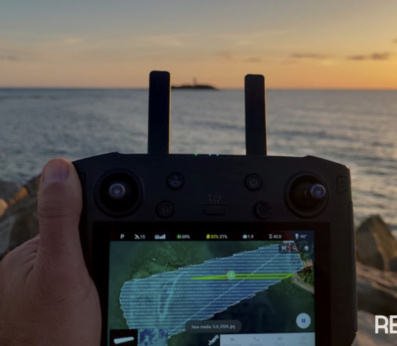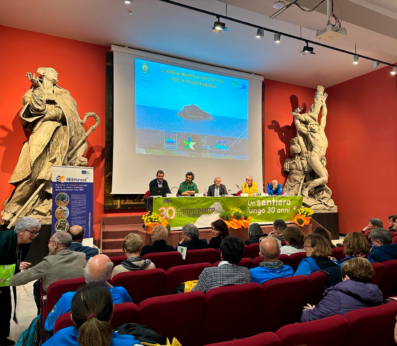Valentina Asnaghi’s team has recently concluded its monitoring in the Marine Protected Area “Isola di Bergeggi” in Liguria, Italy.
The researchers were then able to move on to the next phase of the project: the collection and laboratory cultivation of the Cystoseira found in the portion of the sea where she is still thriving.
The target species for restoration in the coastal waters of this MPA, located in western Liguria region, is called Ericaria amentacea, which is formerly known as Cystoseira amentacea, variety stricta.
Unlike to the other REEForest target species, the characteristic of this Cystoseira is that she lives in the intertidal zone, the place where waves break on semi-submerged reefs.
The other Cystoseira species, on the other hand, those that the different research institutions are growing in their respective laboratories, live at greater depths.
It can also be distinguished by the fact that it’s ”cespitose”, meaning it does not have a single central “stem” (thallus) but several offshoots branching off from a single basal disc, resembling a little bush.
The University of Genoa, one of partners of this LIFE project, has the task of restoring the population of this brown algae within the protected area, which has now lost part of its original cover.
A series of storms, a landslide and the impact of human activities on the coastline have actually reduced the extension of Ericaria both on the shores of Bergeggi island and in some stretches of the facing cliffs.
There has been of course a regression, but luckily Ericaria population in the integral protection zone has not been completely wiped out, as has happened elsewhere in the Mediterranean.
The news is encouraging because it’s a sign that environmental conditions are not so compromised as to potentially undermine restoration.
It’s this role of marine forests that makes them so special.
Besides sequestering the carbon dioxide responsible for the climate crisis, without them there would be no food and shelter for every other marine organism that has made that environment its home. Exactly like forests on land, as to say.
In order to attempt the restoration, the scientists of the DISTAV (Department of Earth, Environmental and Life Sciences) of the University of Genoa set off , boots and wetsuits on, in search of algae populations from which to collect, without causing them any damage, the fertile parts of Cystoseira.
Having found a suitable site, called the “donor” one, where Ericaria can still be found in abundance, they then moved on to identify the receiving site, which is a stretch of coastline that once held the species, the same we want to return soon to host as much biodiversity as possible
In choosing the donor and receiving sites, the operators of Bergeggi Island Marine Protected Area also collaborated with the University. They then identified the area where portions of the algae fronds could be taken, without affecting the site’s population, along the Marine Area’s western reef, towards France.
The reef where the new Cystoseira will be planted to reinvigorate the remaining populations, is located in the central part of the area, further east.
Last week, the first operations were a success: the REEForest team, formed by the professors together with four of their students and some of their post-doctoral researchers, harvested no less than 500 fertile apices!
The small fronds were then rushed to the Laboratory of Benthos Ecology where the researchers “thinned” them, both to remove possible organisms that could contaminate the cultivation, but also to make them the right size to be placed on the clay discs.
The final handling for the apices loaded with zygotes consists of a low-temperature treatment. The thermal shock helps to stimulate the subsequent release of the “seeds”, so that this occurs once they have been placed on the discs used for cultivation and subsequent graft in the sea.
Evidently, the whole procedure was carried out perfectly, the scientists didn’t have indeed to wait long: by the end of last week, the first Ericaria “sprouts”, just few millimeteres long were already visible on the clay discs!
Now we just need to wait for the small Cystoseira thalli to grow enough to let the researchers perform the most exciting part of the process, the outplanting.
The discs with the young Ericaria will be screwed directly onto the rock and, who knows, in a few months we might already see the first results there, where the sea meets the land!



